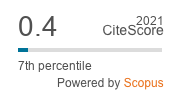Melissopalynology studies on the Indian honey bee (Apis cerana indica Fab.) in southern Kerala
DOI:
https://doi.org/10.33307/entomon.v40i1.63Keywords:
Melissopalynology, Apis cerana indica, Cocos nucifera, Mimosa pudicaAbstract
Melissopalynology studies of the Indian honey bee (Apis cerana indica Fab.) in southern Kerala was undertaken to study the potential pollen and nectar sources of Indian honey bee across the seasons in southern Kerala. A detailed characterization of all the honey and pollen samples showed the presence of 69 different pollen types; of which twenty four pollen types were identified up to species level. They were distributed among 19 families of these, the pollen types from the families of Arecaceae (3) and Asteraceae (3) were best represented in honey and pollen load samples. Honey bees were found to collect pollen from the tall trees (Cocos nucifera) as well as the small plants (Mimosa pudica) irrespective of their height.
Downloads
Published
How to Cite
Issue
Section
License
Copyright (c) 2015 ENTOMON

This work is licensed under a Creative Commons Attribution-ShareAlike 4.0 International License.


